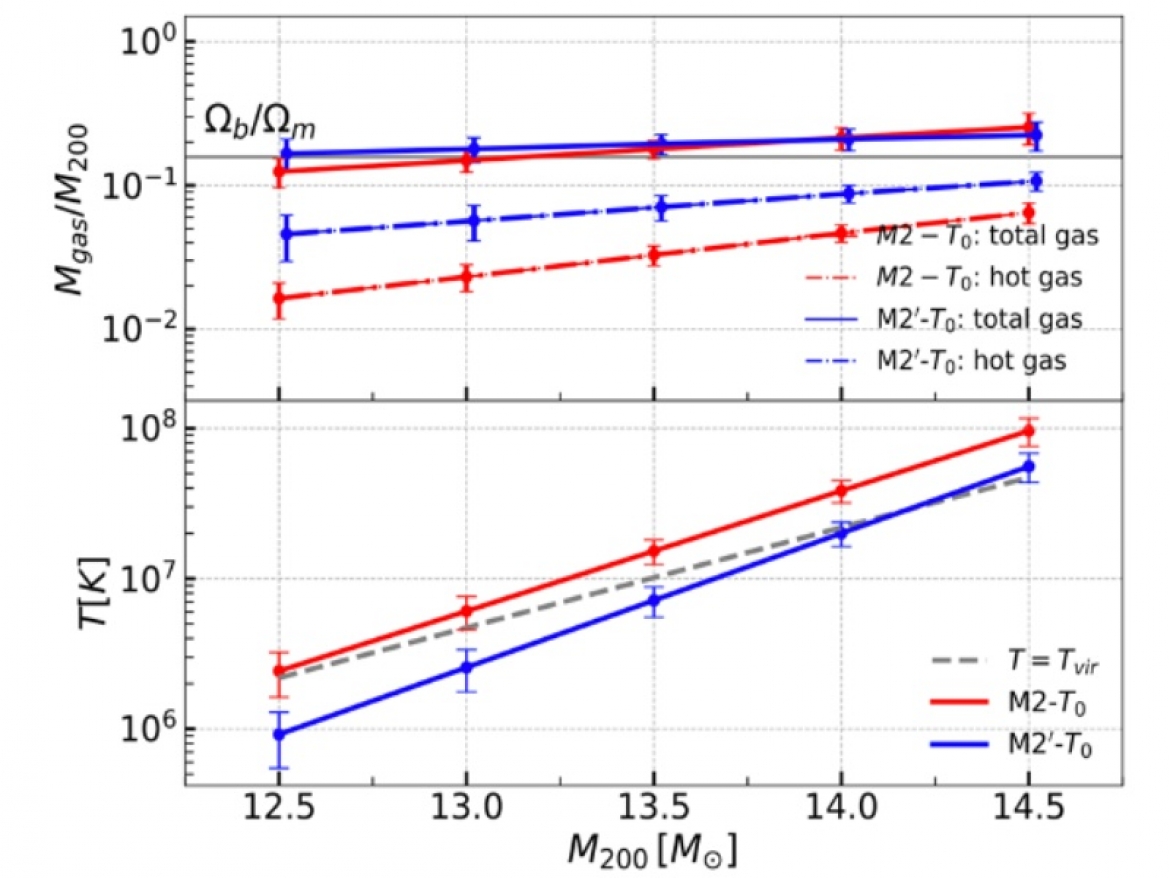Constraining the density and temperature of circumgalactic media with the SZ effect and X-ray data
Galaxies are believed to form and evolve in dark matter halos through the cooling and condensation of hot/warm gas around galaxies, usually termed as Circum-Galactic Medium (CGM). As the repository of baryons, the CGM is important for star formation, gas accretion and the gas-star-gas cycling in/around galaxies. The CGM can be probed by X-ray emission produced by the hot gas in galaxy clusters, which mainly depends on the temperature and density of the gas. The Sunyaev-Zel'dovich effect (SZE) of galaxy clusters on the spectrum of the cosmic microwave background (CMB) provides a complementary way to probe the CGM. The thermal SZE (tSZE) is proportional to the line-of-sight integral of the electron pressure (or thermal energy density), while the kinetic SZE (kSZE) is proportional to the integral of the momentum density along a given line of sight. Measurements of the X-ray emission, tSZE and kSZE have been made for a number of galaxy clusters in the local Universe, and these data should in principle be able to constrain the properties of the IGM. In particular, it is unclear whether the halo gas of clusters is always at the virial temperature and whether the gas can be described simply by a single-phase component or whether it consists of multiple phases.
A collaboration led by PhD student Xuanyi Wu from the Department of Astronomy (DoA) at Tsinghua University has combined measurements of X-ray, tSZE and kSZE to constrain the gas density and temperature of the CGM in galaxy groups/clusters through the technique of Bayesian inference. The collaboration involves Prof. Houjun Mo from the University of Massachusetts, Prof. Cheng Li from DoA and Dr. Seunghwan Lim from Department of Physics and Astronomy, University of British Columbia. A number of generic models, considering different gas components, spatial distributions of mass and intrinsic variance among halos, are used together with a Bayesian scheme to make model inferences. They find that gas with a single temperature component cannot provide a consistent match to the observational data, but that a simple two-phase model, assuming a hot component and an ionized warm component, can accommodate all the observations (see Fig.1). They also give a prediction of the total gas mass fraction in dark halos, which is comparable to the universal baryon fraction (see the title figure), suggesting that most halos can retain most of their baryons. The results also suggest that a significant fraction of the halo gas is in a non-thermalized component with a temperature much lower than the virial temperature.
Relevant publication:
Xuanyi Wu, Houjun Mo, Cheng Li and Seunghwan Lim, submitted to ApJ (available at https://arxiv.org/abs/2007.05664)




